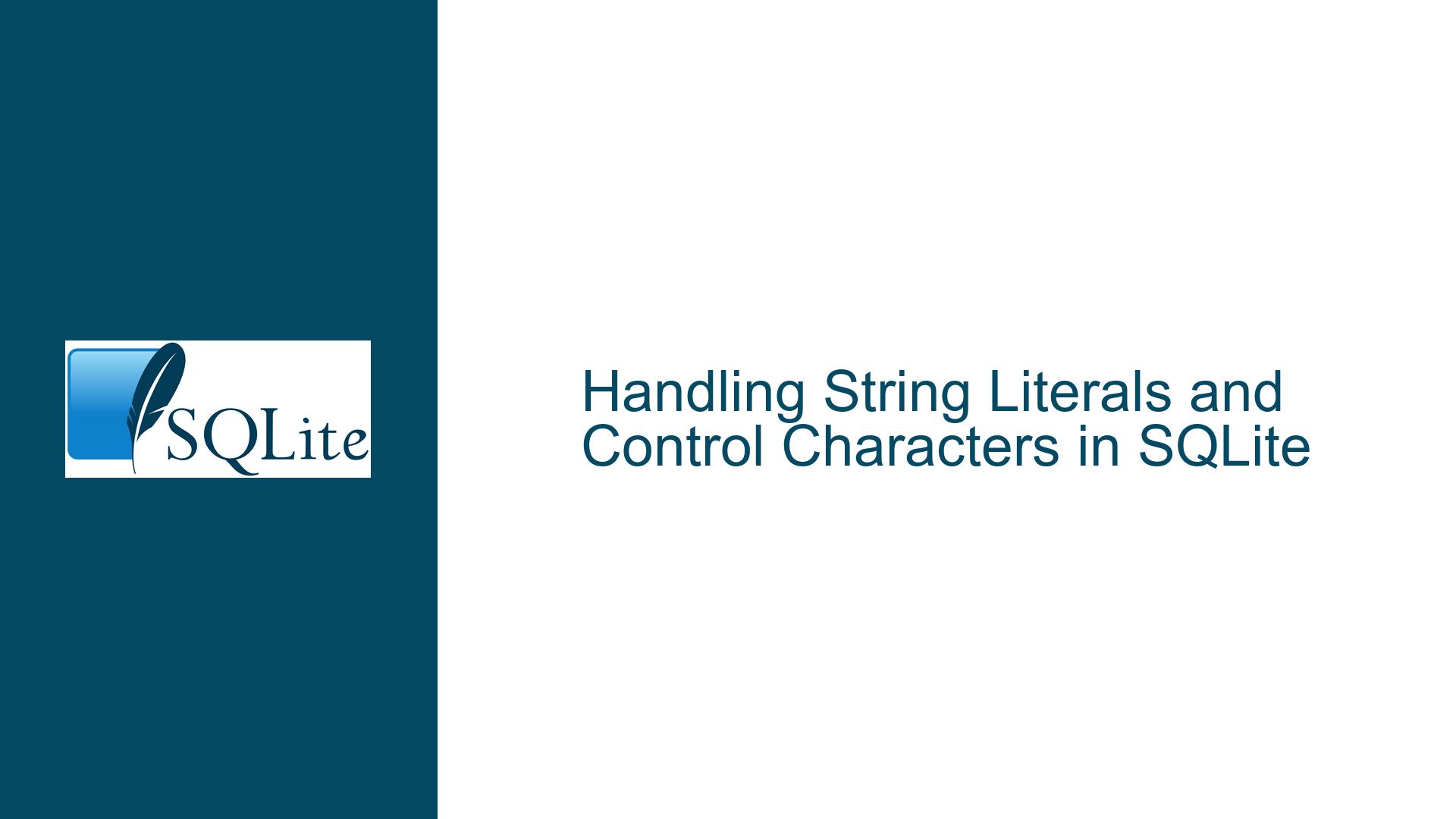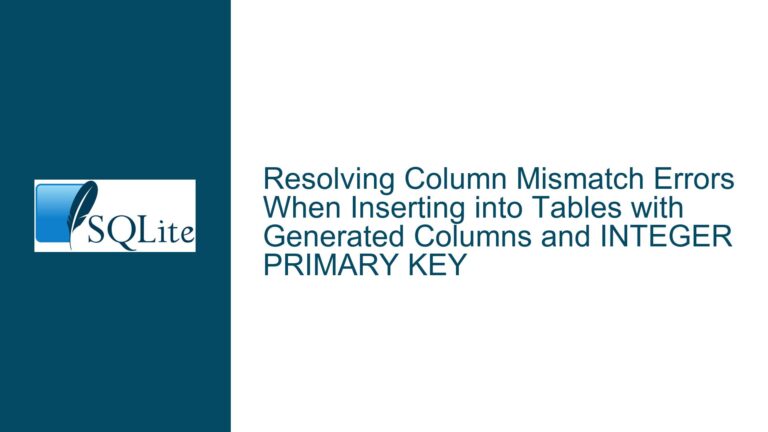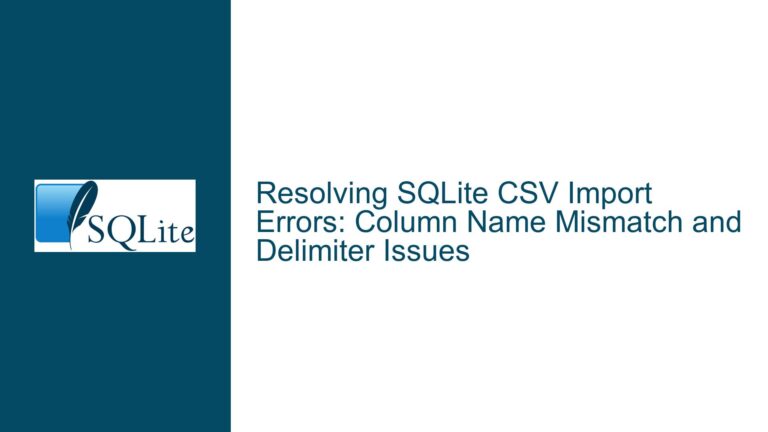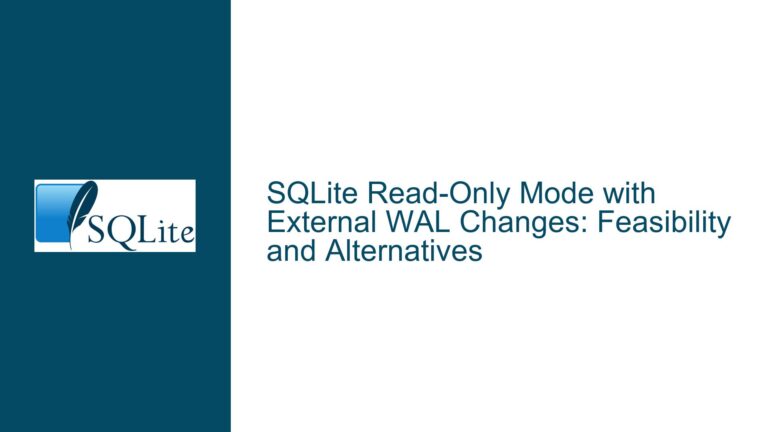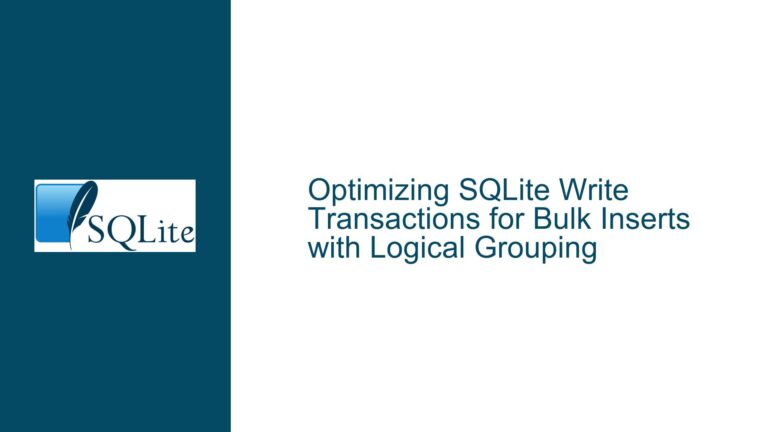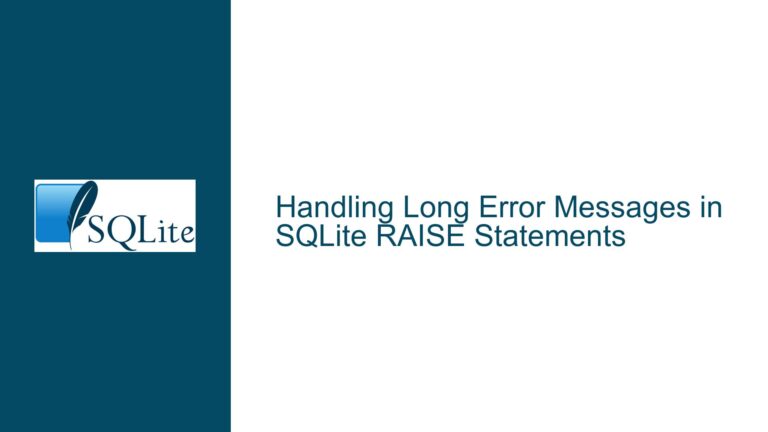Handling String Literals and Control Characters in SQLite
String Literals and Control Characters in SQLite Queries
When working with SQLite, one common challenge is handling string literals that contain control characters, such as newlines or tabs. SQLite, being a lightweight and efficient database engine, adheres closely to SQL standards but does not natively support C-style escape sequences within string literals. This limitation can lead to verbose and less readable queries when dealing with strings that include control characters. For example, a simple string like "It’s raining\ncats and dogs.\n" must be represented in SQLite using concatenation functions or explicit character codes, which can be cumbersome and error-prone.
The core issue revolves around the representation and manipulation of string literals containing control characters in SQLite. Unlike programming languages like C, where escape sequences are interpreted within string literals, SQLite requires explicit handling of such characters. This can lead to queries that are harder to read and maintain, especially when dealing with complex strings that include multiple control characters.
Interrupted Write Operations Leading to Index Corruption
One of the primary reasons for the complexity in handling string literals with control characters in SQLite is the database engine’s design philosophy. SQLite is designed to be a robust and reliable data storage system, prioritizing data integrity and consistency over syntactic sugar. This means that SQLite does not interpret or transform string literals in the same way a compiler would. Instead, it treats string literals as raw data, requiring explicit instructions for any transformations or concatenations.
Another factor contributing to this issue is the lack of standardized escape sequences for control characters in SQL. While some SQL implementations offer extensions for handling escape sequences, SQLite adheres strictly to the SQL standard, which does not include such features. This adherence ensures compatibility and consistency across different SQLite deployments but can make working with control characters more challenging.
Additionally, the platform-specific behavior of control characters, such as newlines, adds another layer of complexity. For example, a newline character on a Unix-based system is represented by \n (ASCII 10), while on Windows, it is represented by \r\n (ASCII 13 followed by ASCII 10). This discrepancy can lead to inconsistencies when the same SQLite database is used across different platforms, further complicating the handling of string literals with control characters.
Implementing PRAGMA journal_mode and Database Backup
To effectively handle string literals containing control characters in SQLite, several strategies can be employed. One approach is to use the char() function to explicitly include control characters in the string. For example, to include a newline character, you can use char(10) within the string concatenation. This method ensures that the control character is correctly interpreted regardless of the platform.
Another approach is to use the printf function, which allows for more readable and flexible string formatting. The printf function can be used to embed control characters within a string using format specifiers. For example, printf('It''s raining%scats and dogs.%s', char(10), char(10)) will produce a string with newline characters at the specified positions.
For scenarios where readability and maintainability are critical, it may be beneficial to preprocess the strings outside of SQLite and then insert them into the database. This preprocessing can be done in a programming language that supports C-style escape sequences, allowing for more natural and readable string definitions. Once the strings are correctly formatted, they can be inserted into the SQLite database as literals.
In cases where platform-specific behavior of control characters is a concern, it is important to normalize the strings before inserting them into the database. This normalization can involve converting all newline characters to a consistent format, such as Unix-style \n, regardless of the platform. This ensures that the strings will be interpreted consistently across different environments.
Finally, to mitigate the risk of data corruption or inconsistencies, it is crucial to implement robust database backup and recovery strategies. Using SQLite’s PRAGMA journal_mode can help ensure data integrity by enabling features like Write-Ahead Logging (WAL), which provides better concurrency and crash recovery. Regularly backing up the database and testing the backups can further safeguard against data loss or corruption.
In conclusion, while SQLite’s handling of string literals with control characters can be challenging, understanding the underlying principles and employing appropriate strategies can significantly simplify the process. By leveraging functions like char() and printf, preprocessing strings outside of SQLite, normalizing control characters, and implementing robust backup strategies, developers can effectively manage string literals containing control characters in SQLite.
